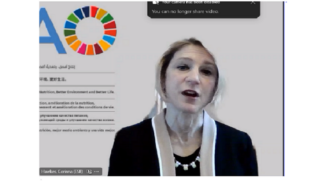A panel of experts at Food Industry Asia Lunch Series session, held in collaboration with World Bank, highlighted the need for a multi-sectoral approach to tackle the burden of foodborne diseases (FBDs) and ensure food safety across Asia.
The panel was moderated by Ms Jiang YiFan, Head of Science and Regulatory Affairs at FIA, who shared that the industry body was working closely with governments and other partners to enhance the development of food safety competency in the region.

Mr Steven Jaffee, Lead Agricultural Economist at World Bank’s Agricultural Global Practice, kicked off the session by sharing about the growing burden of FBDs in low- and middle-income countries (LMICs), emphasising that the issue is much more prominent in Asia, based on a recent report by World Bank titled “The Safe Food Imperative: Accelerating Progress in Low- and Middle-Income Countries”.
While it is widely understood that government interventions can influence food safety performance, to place the onus solely on the public sector has become a thing of the past.
“In some countries, public policy on food safety seems to be based on the notion that government must play the lead role in protecting consumers. As food supply chains become more and more complex, this notion becomes increasingly untenable. Food safety is actually a shared responsibility – of consumers, farmers, private food companies, government, the scientific community, civil society organisations, and others,” Mr Jaffee said.
This revolution in responsibility is no easy task. Mr Jaffee added, “In many countries, we need to see a paradigm shift from the traditional authoritative model – emphasising regulators detecting and penalising non-compliant actors – to a hybrid approach where government entities both enforce regulations and apply multiple measures to motivate and facilitate investments and positive behavioural changes from all participants, from farm to fork.”
Additionally, the panellists outlined several initiatives in areas such as research and development, regulatory frameworks and education, that when adopted could help to significantly boost food safety capacity building across the region.
“In order to effectively reduce the burden of unsafe food and boost consumer trust, the One-Health approach is particularly relevant as it involves the collaborative effort of all sectors at the local, national and global levels. This would allow developing economies to strengthen their capabilities to better manage the food safety and health threats,” said Ms Shashi Sareen, International Food Safety Advisor and Consultant.
Responsibilities of the private sector were also highlighted at the session and as the producer of food, it is vital that all players possess the necessary knowledge and skills to develop safe products for consumers.
The food industry recognises that the best way to tackle food safety effectively is through multi-sectoral partnerships where knowledge can be cascaded freely to those most in need. Efforts from the industry have also grown by leaps and bounds, and many food manufacturers have introduced their own initiatives to strengthen the food safety system.

“At Cargill, we seek to foster a strong culture of food safety among all our employees as we believe they play a crucial role in ensuring the success of our food safety system. They are empowered to take action when they have a concern or see an issue that could compromise food safety, adding another line of security against potential threats.
“Beyond that, we work closely with governments and industry bodies to ensure alignment on food safety standards. We also adopt a comprehensive risk-based approach to proactively manage potential risks along the food supply chain,” said Mr Bruce Blakeman, Vice President for Corporate Affairs in Asia Pacific at Cargill.
The discussions, on a whole, pointed to the reality where gaps in safety have emerged across the entire food supply chain. While there is no silver bullet to immediately solve the multifaceted challenges in ensuring food safety, transparency, public-private partnerships and proactive sharing of expertise and information are the ways forward to overcome the complexities in the supply chain – not only in Asia, but across the rest of the world.



